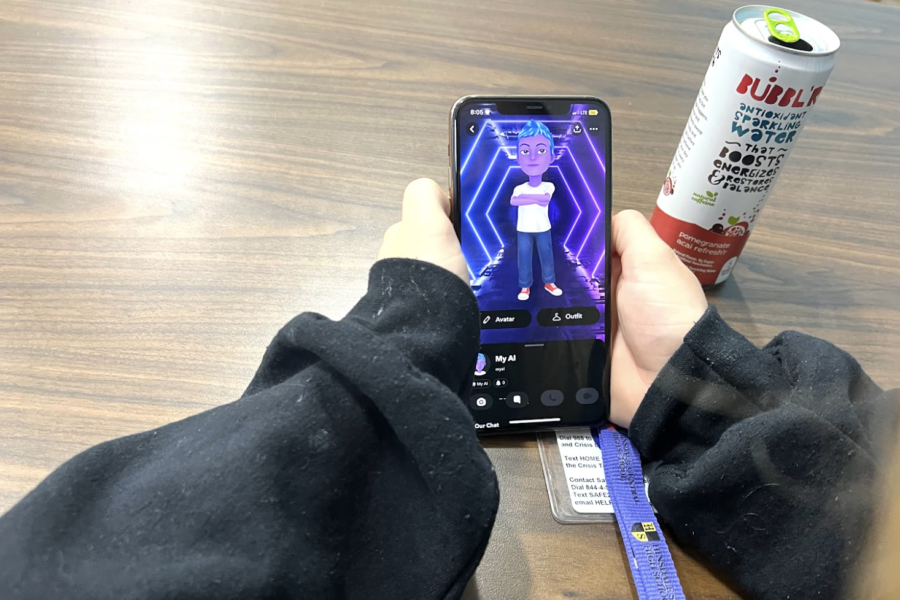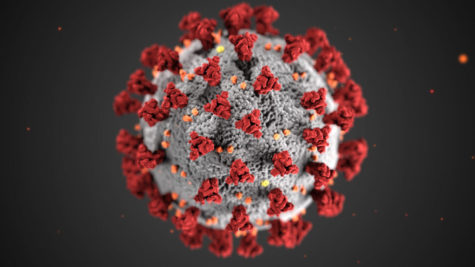Snapchat’s New AI Creates Mixed Reactions
Junior Finley Bisch customizes her Snapchat AI.
On April 19, Snapchat released an AI feature powered by Open-AI’s ChatGPT technology to all users of the app.
It had been available to Snapchat+ subscribers since February, but is now accessible to everyone.
According to Snapchat, the My AI feature can answer trivia questions, give advice, plan trips, and give suggestions. You can type anything to the AI and receive a developed and human-sounding response in seconds.
Snapchat said that the AI has access to any content already shared in the app, yet there has been criticism regarding the AI having location data and access to other private information.
“I have my location off on Snapchat but if you ask it where you are, the AI still knows,” said Ella Smith, junior.
When users attempted to get rid of the feature pinned to the top of their screen, they found that only paid subscribers are able to remove it.
“My students were telling me, ‘Mr. Esau it showed up here I can’t get rid of it,’ and it was just kind of creepy,” said Justin Esau, English teacher.
The AI even attempts to analyze “snaps”, or photos that you send to it. Many find this odd.
“I sent a picture of the ceiling and it told me it liked the shirt I was wearing,” Smith said.
Techcrunch reported a series of 1-star reviews of Snapchat after the AI’s launch, indicating many users are unhappy with it. Still, opinions on the feature do vary.
“It’s creative with some things and it is more helpful than ChatGPT,” said Finley Bisch, junior.
The Snapchat AI is very customizable; it’s given a Bitmoji that you can edit and it allows you to give it a name.
Since its release in November, the ChatGPT AI system has also grown popular among Hinsdale Central students and staff due to its potential.
“When it became clear how successfully it could write about things, I tried to see what limitations it looked like it had and tested it out just to see if there were potential applications that could be used for a teacher,” Esau said.
Turn-it-in has already developed a new AI detection system which analyzes submitted assignments to see how likely something was written by AI.
“I know it’s being used and not just for essays,” Esau said. “I think the problem is that it’s not going away. Just saying ‘AI is evil!’ isn’t going to solve anything.”
The future of AI on social media is unknown, but will likely continue to play a role in it.
“I think it will stay on Snapchat with the amount of people talking about it,” Bisch said.
Snapchat is continuing to make improvements to the AI, and is open to any feedback from Snapchatters.














